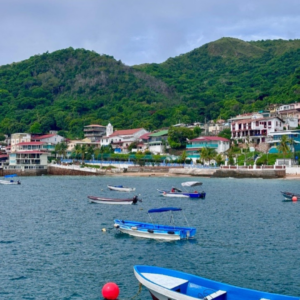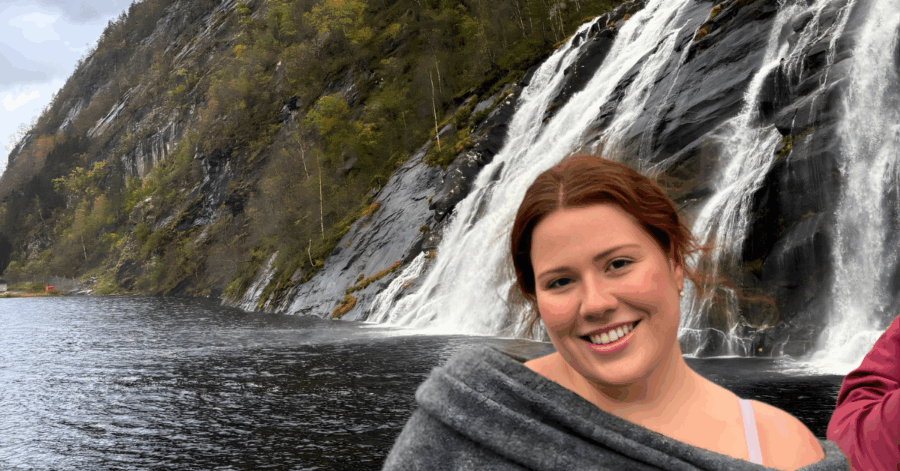
Since early June, I’ve had the privilege of carrying out my fellowship with the International Institute for Democracy and Electoral Assistance (International IDEA) in Panama City, Panama.
Working closely with the Institute of Democratic Studies (INED) at the Electoral Tribunal of Panama, I have collaborated with some of the sharpest minds in the field to tackle complex issues facing Panama’s democracy, as well as others around the world.
One of my primary mentors with INED is Ramón Benjamín. He is a multidisciplinary mastermind, focusing his research on numerous topics that include democracy, citizenship, human rights, intolerance, civic education, electoral actors, electoral behavior, political parties and Panamanian political elites.
I’ve created a database with references to speed the initial research process for his upcoming project on hate discourse in electoral environments. I’ve divided the research into a few areas, including fascist and colonial discourse, case studies in political discourse, jurisprudence, political and electoral propaganda, social media, and theoretical analysis. Considering my semester-long research project this spring on misinformation and disinformation in the electoral process, I have gained a unique perspective on how hate discourse can be carried out in political arenas.

My other mentor is Yanis Batista Franco. Her focus at INED is the Electoral Tribunal’s Youth Citizenship website, where she creates online resources to foster civic engagement and education for adolescents who have recently reached the voting age of 18 years old. I’ve had the pleasure of working with Yanis and Rosiquel Lara de Jaen on various projects to expand the resources available on the website. The first project I worked on with them was creating scripts for educational modules covering the importance of community involvement.
We carefully outlined the history of youth community involvement, the importance of volunteer work as a form of community engagement, the personal and communal benefits of youth volunteer work, and how to get involved in community-centered volunteer opportunities.
We also created scripts for educational modules covering youth involvement in the protection of human rights. In these scripts, we focused on the history of human rights in Panama, types of human rights and important figures in the fight for human rights. I loved working on these projects, and I wish there were more readily available resources like these for youth in America.
I am currently working with this team on a proposal to create volunteer opportunities at the Electoral Tribunal and INED. Considering that volunteer work is a requirement for earning a bachelor’s degree at most colleges and universities in Panama, creating these opportunities at the Electoral Tribunal and INED can be a great opportunity to expose future Panamanian professionals to all of the possible career paths that are offered in this environment.

This project would give young college students the opportunity to learn new skills, develop a sense of community, experience a new work environment and fulfill their volunteer requirements for graduation. We are separating the volunteer positions into three different opportunities within the Electoral Tribunal.
The opportunities are an internship at INED, volunteer work at the Democratic Culture Museum and volunteer work at the Democratic Garden. My internship at INED has been extremely fulfilling, and I am certain that expanding these opportunities to Panamanian youth will bring fresh ideas and perspectives to the table.
Finally, I’ve had the pleasure of assisting Julio César Pérez Martinez and Miriam Zelaya Pinilla on an ongoing project to create a database containing every legislative bill that has been introduced in the National Assembly of Panama. This is a massive project, but for the sake of my time here, we are only working on the most recent presidential term, 2019-2024.
The goal is to create graphs and other types of visualizations to better understand the breakdown of who is proposing bills, which committees they are assigned to and how many bills become laws. We are also tracking details like the times when bills are introduced, how many debates each goes through and why they are rejected if they do not become laws.
Although I’m not working with Julio César and Miriam directly on their research projects, I’ve had the opportunity to read some of their articles in publications such as “Debate: Revista de la Asamblea Nacional de Panama: Elecciones 2024.” Reading their insights on the state of Panamanian democracy has been one of my favorite takeaways from this experience so far.

Aside from our assigned projects, INED has organized various “field trips” to help us get to know Panama’s history as a country and democracy. Some of the places we have visited include the Center for Political and Democratic Research at the University of Panama, the Ricardo J. Alfaro Library and Museum, the Smithsonian Tropical Research Institute, the Roberto F. Chiari Library at the Panama Canal and the Center for Historical, Anthropological and Cultural Research.
The Smithsonian Tropical Research Institute was one of my favorite trips because it is the only Smithsonian Research Institute outside the United States. We got to see parts of the country’s biodiversity under some of the best microscopes in the world, tour the library and offices, and even meet some of the scientists. We also got to watch someone being interviewed for a documentary, and received textbooks to take home as souvenirs.
Outside of work, I have loved exploring everything the city and country have to offer. Everyone at INED has been extremely welcoming and interested in building relationships with our cohort. Some have taken us under their wing and shown us their favorite parts of Panama.
Fellow interns and I took a quick day trip to Colón, where we got to see a ship pass through the Panama Canal, visit neighborhoods where scenes from the movie “Suicide Squad 2” were filmed and visit the famous Spanish fortress, El Castillo de San Lorenzo. We have also become well acquainted with Casco Viejo, one of the most historic and popular neighborhoods in Panama City. We also watched a show at the National Theater, tried popular restaurants and took in the beautiful architecture.

Panama City is also known for its close proximity to many tourist-friendly islands. One day, we took a guided tour to Monkey Island, where we got up close and personal with various native monkey species. I fed one some fresh fruit out of my hand. As a cohort, we visited Taboga Island, where we soaked in the sun and visited the Church of San Pedro, which is the second-oldest church in Latin America.
Overall, I have been blown away by everything Panama has to offer. The country is a gold mine for anyone interested in global history, biodiversity and democracy!
I am grateful to have the opportunity to aid in the construction of stronger democracies through my internship with International IDEA. The people I have worked with at INED are some of the smartest people I’ve ever met, and I’m excited to carry their knowledge with me throughout the rest of my academic and professional careers.
This blog post was contributed by Alejandra Vadillo and originally appeared on the UT Embedded Scholars blog.





